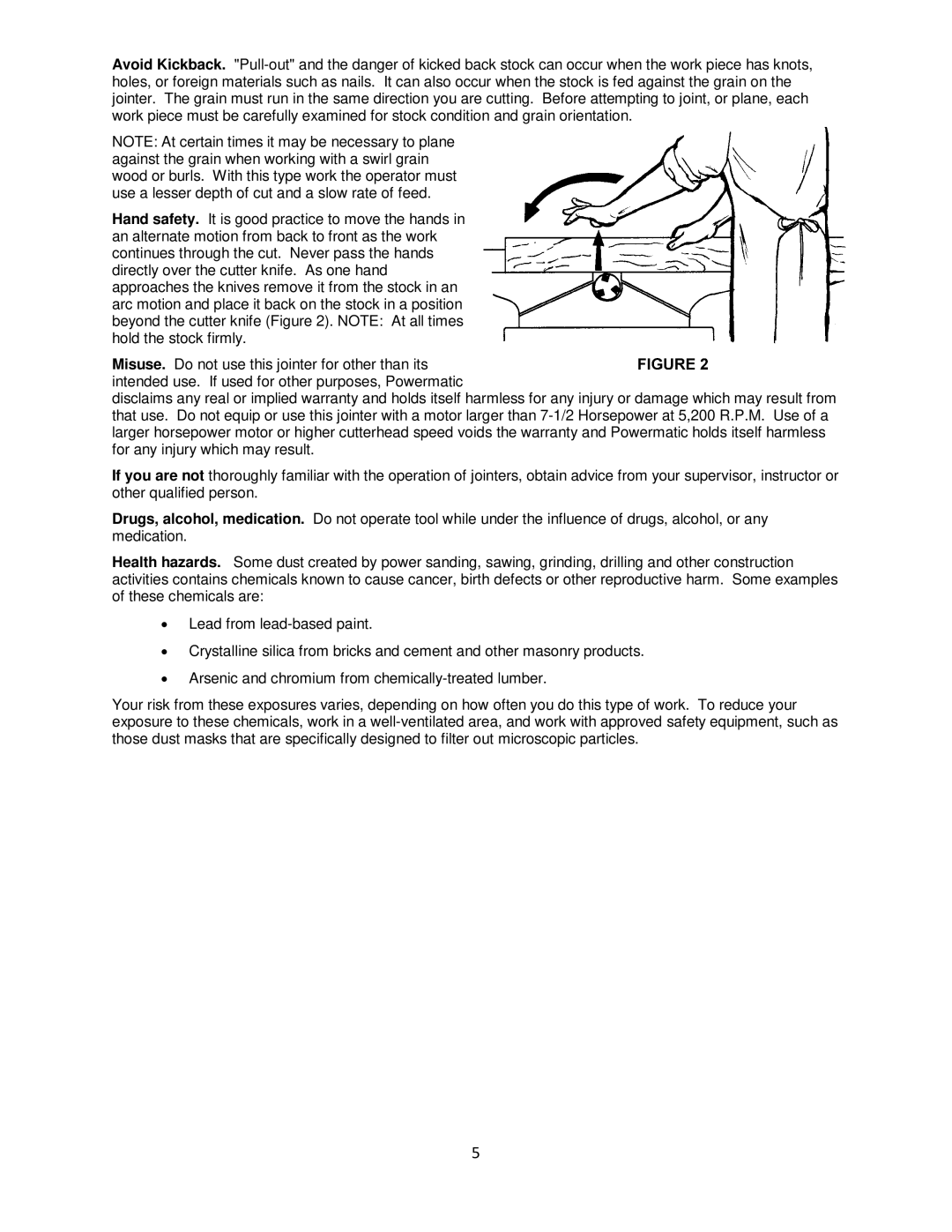
Avoid Kickback.
NOTE: At certain times it may be necessary to plane against the grain when working with a swirl grain wood or burls. With this type work the operator must use a lesser depth of cut and a slow rate of feed.
Hand safety. It is good practice to move the hands in an alternate motion from back to front as the work continues through the cut. Never pass the hands directly over the cutter knife. As one hand approaches the knives remove it from the stock in an arc motion and place it back on the stock in a position beyond the cutter knife (Figure 2). NOTE: At all times hold the stock firmly.
Misuse. Do not use this jointer for other than its intended use. If used for other purposes, Powermatic
disclaims any real or implied warranty and holds itself harmless for any injury or damage which may result from that use. Do not equip or use this jointer with a motor larger than
If you are not thoroughly familiar with the operation of jointers, obtain advice from your supervisor, instructor or other qualified person.
Drugs, alcohol, medication. Do not operate tool while under the influence of drugs, alcohol, or any medication.
Health hazards. Some dust created by power sanding, sawing, grinding, drilling and other construction activities contains chemicals known to cause cancer, birth defects or other reproductive harm. Some examples of these chemicals are:
•Lead from
•Crystalline silica from bricks and cement and other masonry products.
•Arsenic and chromium from
Your risk from these exposures varies, depending on how often you do this type of work. To reduce your exposure to these chemicals, work in a
5
